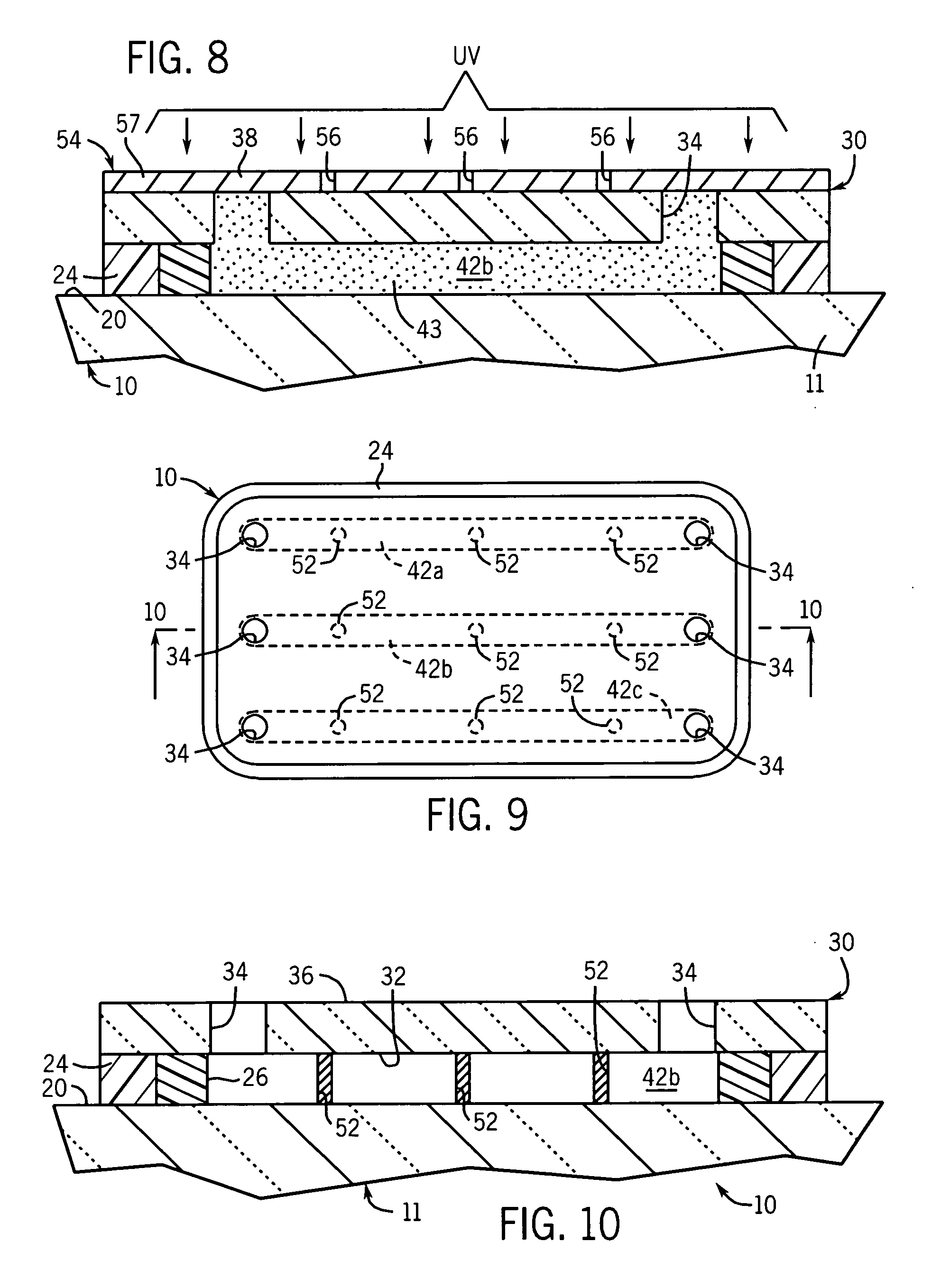Cell mimic platform and method
a cell mimic and microfluidic technology, applied in the field of microfluidic devices, can solve the problems of difficult comparison of the results of dilute solution studies with the actual interactions inside the cell, crowded environment within the cell, anomalies in diffusion, etc., and achieve the effect of easy capture of the basic characteristics of the cellular nano-environmen
- Summary
- Abstract
- Description
- Claims
- Application Information
AI Technical Summary
Benefits of technology
Problems solved by technology
Method used
Image
Examples
Embodiment Construction
[0032] Referring to FIGS. 1 and 2, a microfluidic device defining the cell platform of the present invention and used to effectuate the methodology of the present invention is generally designated by the reference numeral 10. As hereinafter described, it is contemplated to fabricate a microfluidic device in a variety of manners including use of photopolymerizable solutions. It is noted, however, microfluidic device 10 may be fabricated from other materials without deviating from the scope of the present invention. Further, in order to achieve in situ fabrication of the specific components hereinafter described, liquid phase photopolymerization may be used, although the various channels within microfluidic device can be fabricated using other methods (e.g., micromolding).
[0033] By way of example, microfluidic device 10 includes a generally rectangular glass slide 11 defined by first and second ends 12 and 14, respectively; first and second edges 16 and 18, respectively; and upper fa...
PUM
 Login to View More
Login to View More Abstract
Description
Claims
Application Information
 Login to View More
Login to View More - R&D
- Intellectual Property
- Life Sciences
- Materials
- Tech Scout
- Unparalleled Data Quality
- Higher Quality Content
- 60% Fewer Hallucinations
Browse by: Latest US Patents, China's latest patents, Technical Efficacy Thesaurus, Application Domain, Technology Topic, Popular Technical Reports.
© 2025 PatSnap. All rights reserved.Legal|Privacy policy|Modern Slavery Act Transparency Statement|Sitemap|About US| Contact US: help@patsnap.com



